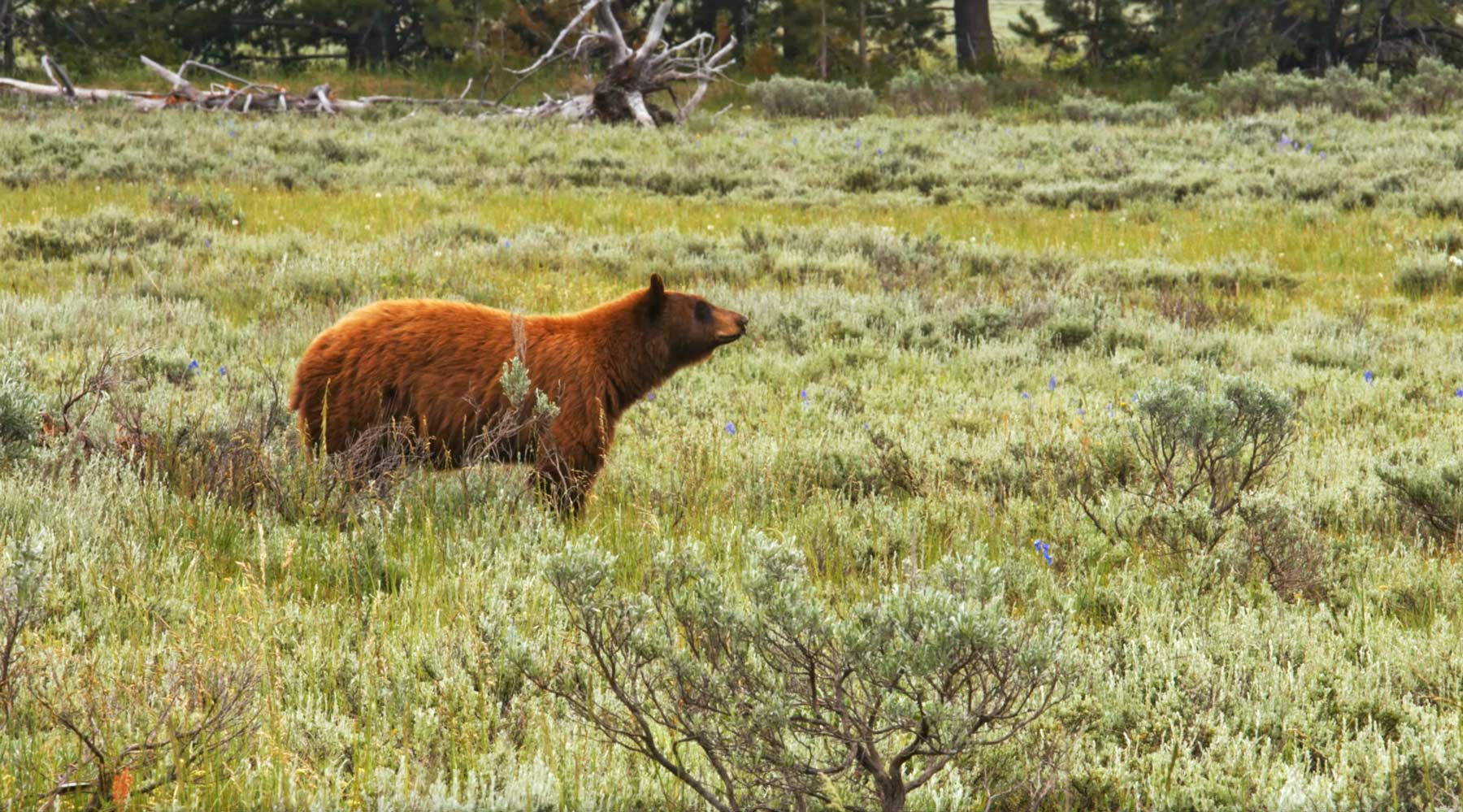
Article Overview: Best National Parks Wildlife
BISON AND BEARS AND MOOSE, OH MY! Did you know America’s national parks are ranked among the best places in the world to see incredible wildlife?
Our national parks are chocked full of unbelievable wildlife opportunities. From some of the largest (and scariest) apex predators on the planet to magnificent birding opportunities to unbelievable aquatic wonders. We’ve put together our top ten list. These are the most incredible national parks where you will see the most fantastic wildlife wonders.
In this post we’ve included locations, best times to catch a glimpse of these animals, tips for doing it safely & respectively, and more.
Let’s dive in!

About the Folks Behind this National Parks Wildlife Article
We’re the Pattiz Brothers. We’ve spent our entire adult lives exploring and filming America’s national parks and public lands. Our dad is a retired history teacher. We’re thrilled to announce that he’s joined our team. Tony Pattiz loves to do research so he assisted us with this article.
Looking to see some amazing wildlife? Our goal is to help you plan your wilderness adventure. You won’t have to figure out which parks are best for discovering wildlife wonders. We’ve already done that for you.
Are you ready for close encounters with bald eagles, bighorn sheep, bison, elk, black bears, coyotes, deer, gray wolves, mountain lions, pronghorn and wolverines? And, let’s not forget magnificent aquatic life or beautiful birds which, like so many Americans these days, love traveling to the parks.
We’ve got that too! So, if that’s what you’re looking for then we’ve got the top ten list of America’s best national parks for watching wildlife wonders.
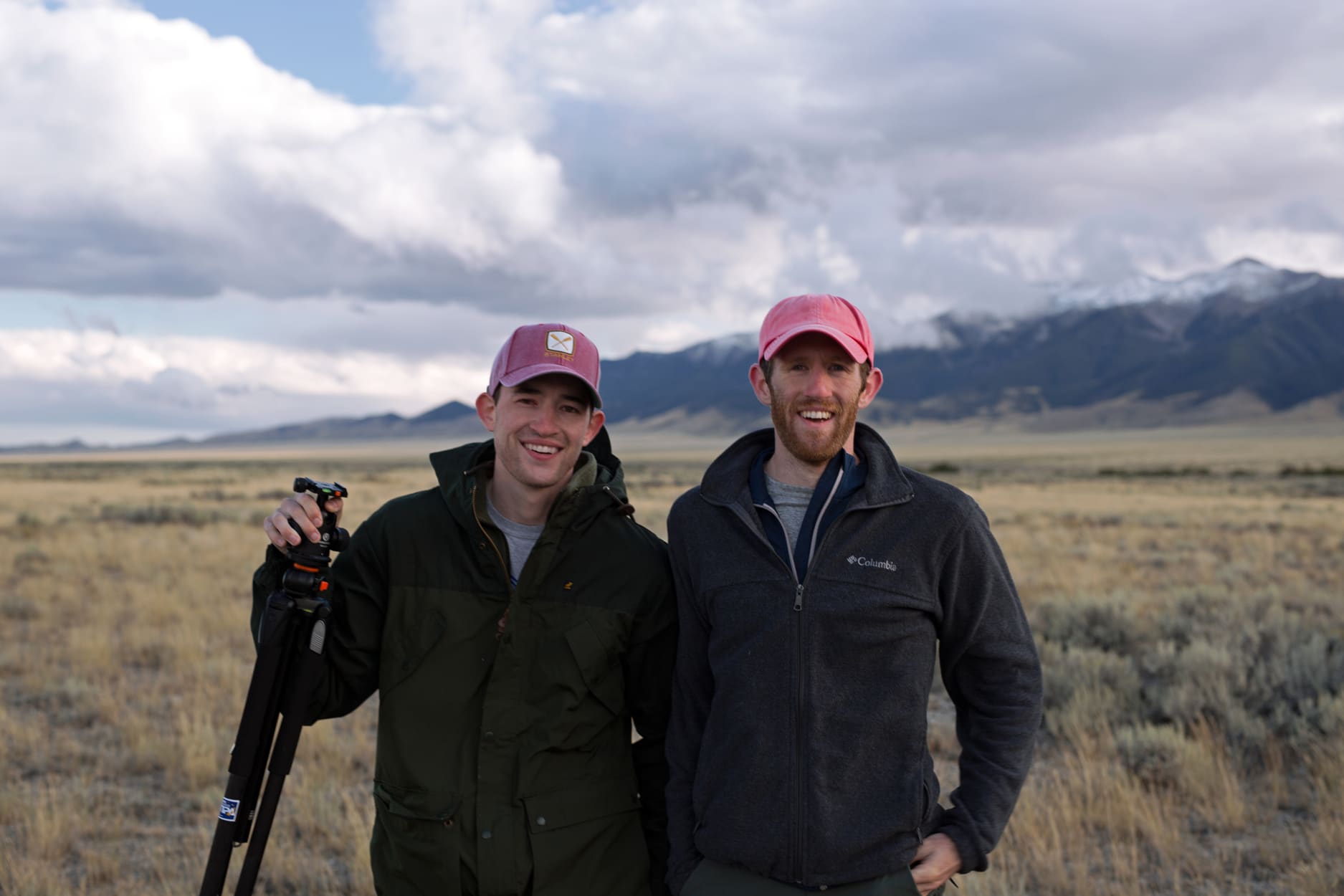
How Did We Choose These Wildlife National Parks?
We’ve worked with the National Park Service, U.S. Department of the Interior and the U.S. Forest Service for years creating a series of award winning films. Our films celebrate the beauty and splendor of what writer and historian Wallace Stegner called “the best idea we ever had.”
Our work has been featured in leading publications all over the globe. We appear regularly on The Weather Channel to talk about the amazing places we’ve been to and share our recommendations with you.
We offer advice and suggestions on how you and your family can have the optimal experience when travelling to one of our national parks. Even members of our own family suspect we might actually know what we’re doing when it comes to selecting great parks to visit.
A Word About Our Methodology
Now you might be wondering how we ranked all of these parks. Our ranking system is not perfect. What ranking system is. We’re hoping we’ve done a better job than the college football playoff selection committee.
Besides, we don’t have win-loss records, strength of schedule, conference championships won, head-to-head results or results against common opponents to evaluate.
What we’ve done to compile our top ten list is, first and foremost, utilize our own experience. We’ve been to these amazing places and we’ve seen these incredible creatures. Second, we’ve heard from others who have shared their experiences with us.
And, lastly, we’ve done some research to see if published reports align with what our own two eyes (or, I guess four eyes in this case since there’s two of us) have shown us. We’ve taken all of this data and used it to put together our list for you.
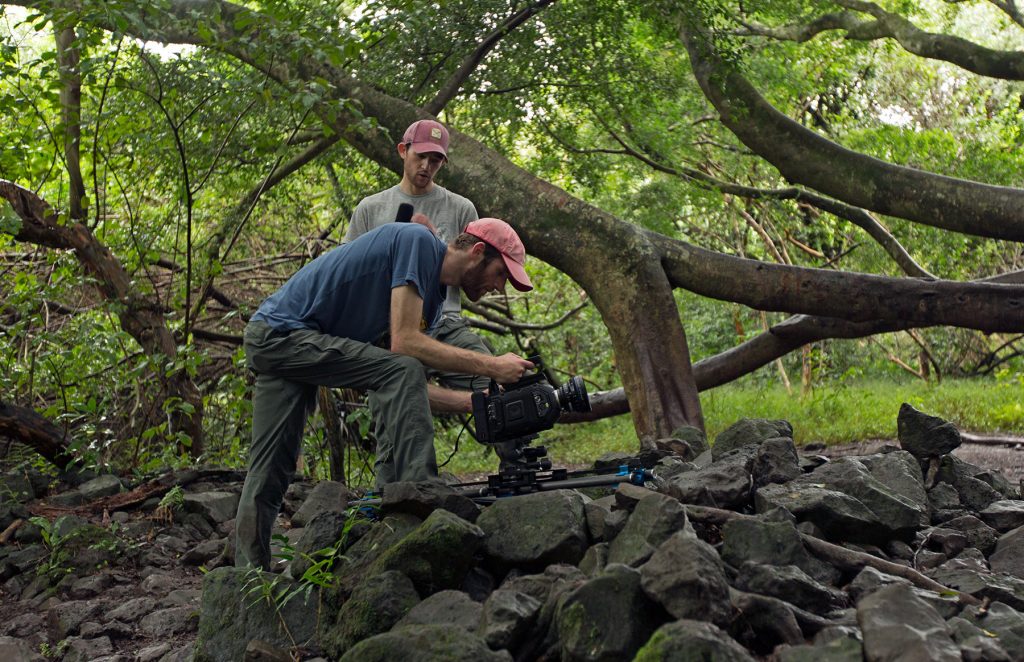
The order in which we present these parks does not reflect any preference regarding which one is preferable to another. We realize that judging is subjective. As always, we welcome your comments and suggestions. With that in mind, we’re ready to unveil our top ten list. Drum roll please…
Best National Parks to See Wildlife
1. Yellowstone National Park
We begin with the granddaddy of them all. Yellowstone’s got it! It’s the first national park to be established by President Ulysses S. Grant on March 1, 1872. Yellowstone is an absolutely spectacular and magical national park.
A landscape dotted with otherworldly thermal works, bison holdouts from a time when they ruled the prairie, a thriving wolf population and an encapsulation of the great American west.
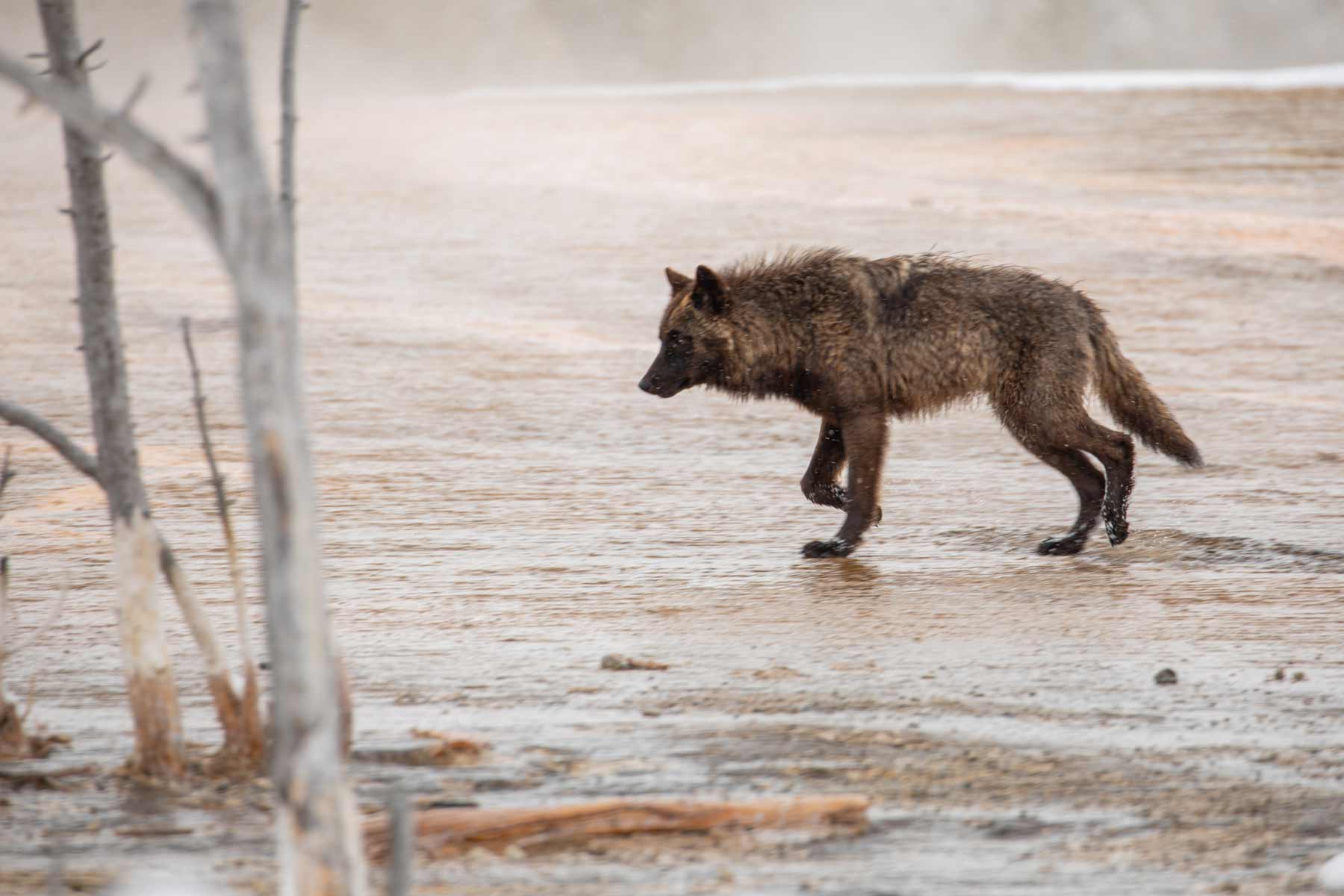
Believe it or not, Yellowstone is home to the largest concentration of mammals in the lower 48 states. It features almost seventy different species of wildlife. Among the most commonly seen are bald eagles, bighorn sheep, bison, black bears, coyotes, deer, elk, gray wolves, grizzly bears, moose, mountain lions, pronghorn and wolverines.
We’re not only going to share with you what’s there. We’re also going to share with you where you can go to see it. We want our top ten list to be a valuable resource as you plan you next vacation getaway.
In the case of Yellowstone, we would recommend the following places as the best to view their incredible wildlife.
We begin with Lamar Valley which we believe is the best place in Yellowstone to see wildlife. Created by glaciers and traversed by the Lamar River, the grasslands which cover this valley are easily accessible on Highway 212 and attract the biggest land species in the park—bears, bison, elk, and moose. Wolves can be found in there too.
If you’re looking for antelope, bighorn sheep, bison, deer, marmots and pronghorn then we recommend Agate Creek. It’s a fourteen mile trek into the Tower-Roosevelt area. Another great place for watching the bighorn sheep is Mount Washburn. And, if you’re planning to stay then we recommend the Tower Fall Campground.
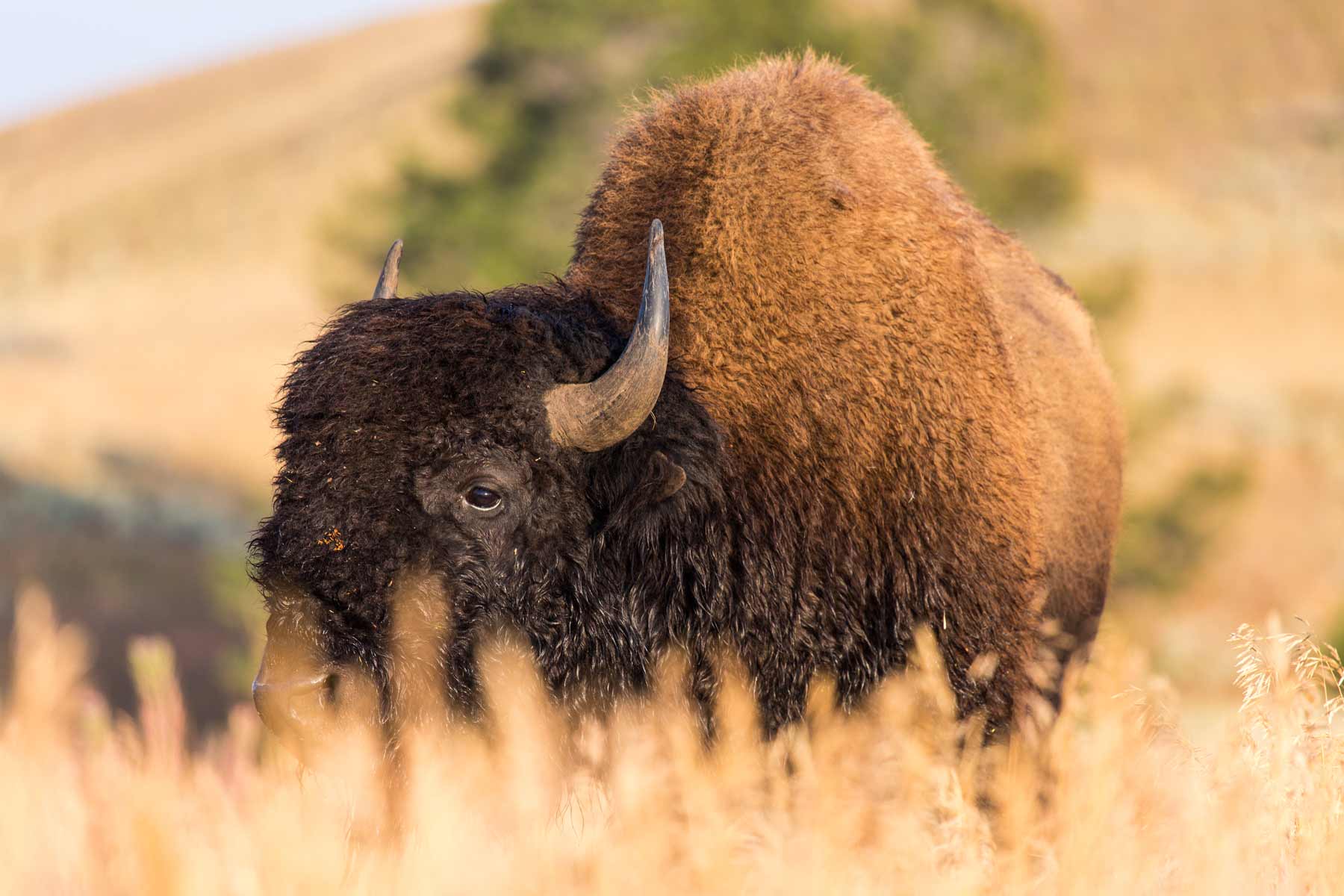
2. Grand Teton National Park
Consider the history of this wilderness wonderland. It goes back at least 11,000 years when the first nomadic hunter-gatherers began migrating into the region. Efforts at preservation began in the late 19th century. In 1929, Grand Teton National Park was established, protecting the Teton Range’s major peaks.
Grand Teton is a great place to see wildlife. The park lies in the heart of one of the largest, intact temperate ecosystems in the world. Bears, beavers, elk, moose, sandhill cranes and wolves comprise many of the species who inhabit this park.
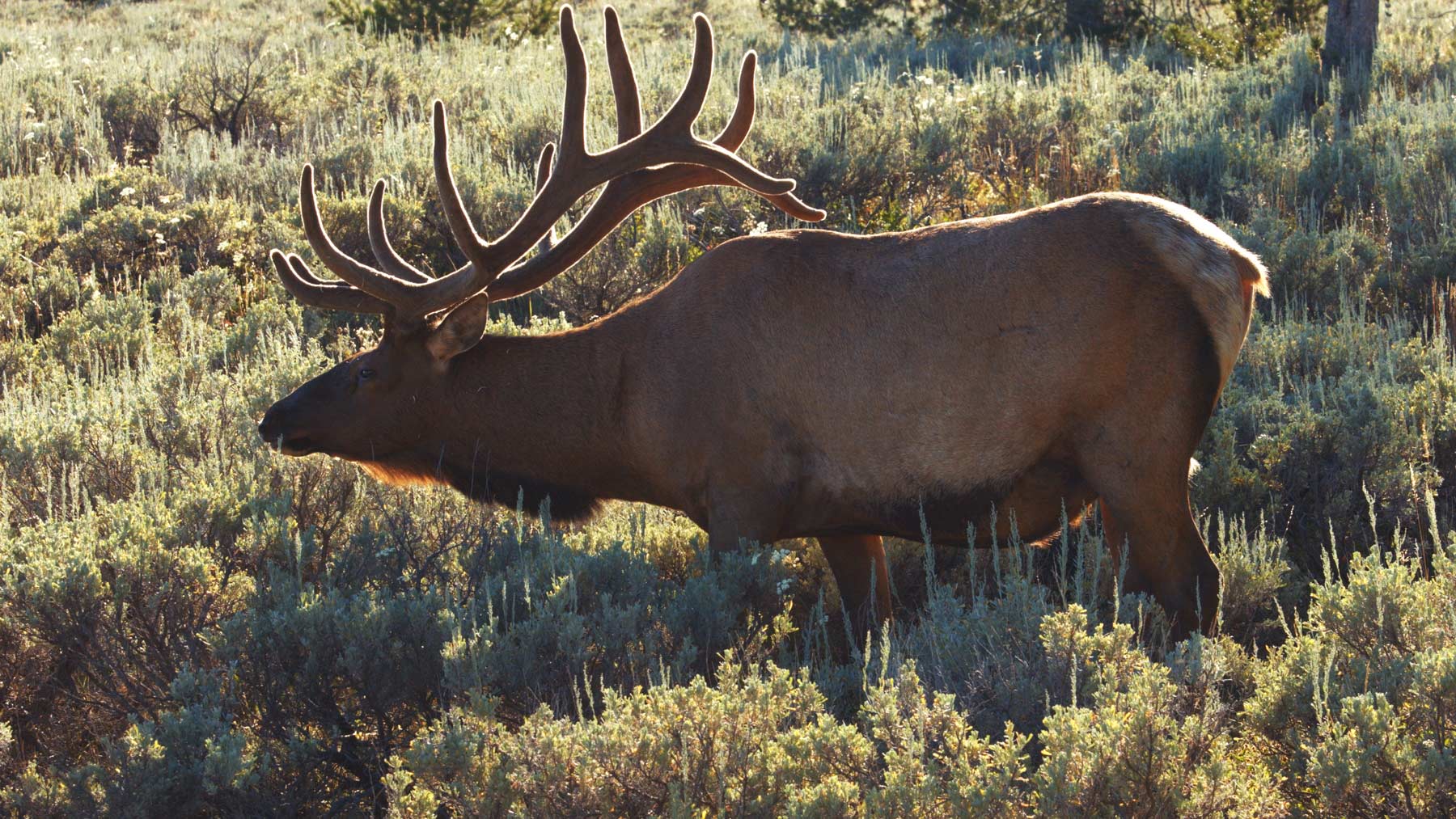
One place we definitely recommend, as we’ve spent quite a bit of time there ourselves, is Moose-Wilson Road. It’s a narrow, winding route through aspen stands, pine forests, and riparian areas. It’s also a “happening place” if you’re looking for some incredible views of some amazing wildlife. This includes: black bears, elk, grizzly bears and mule deer. Did we mention moose? You’ll find them there as well.
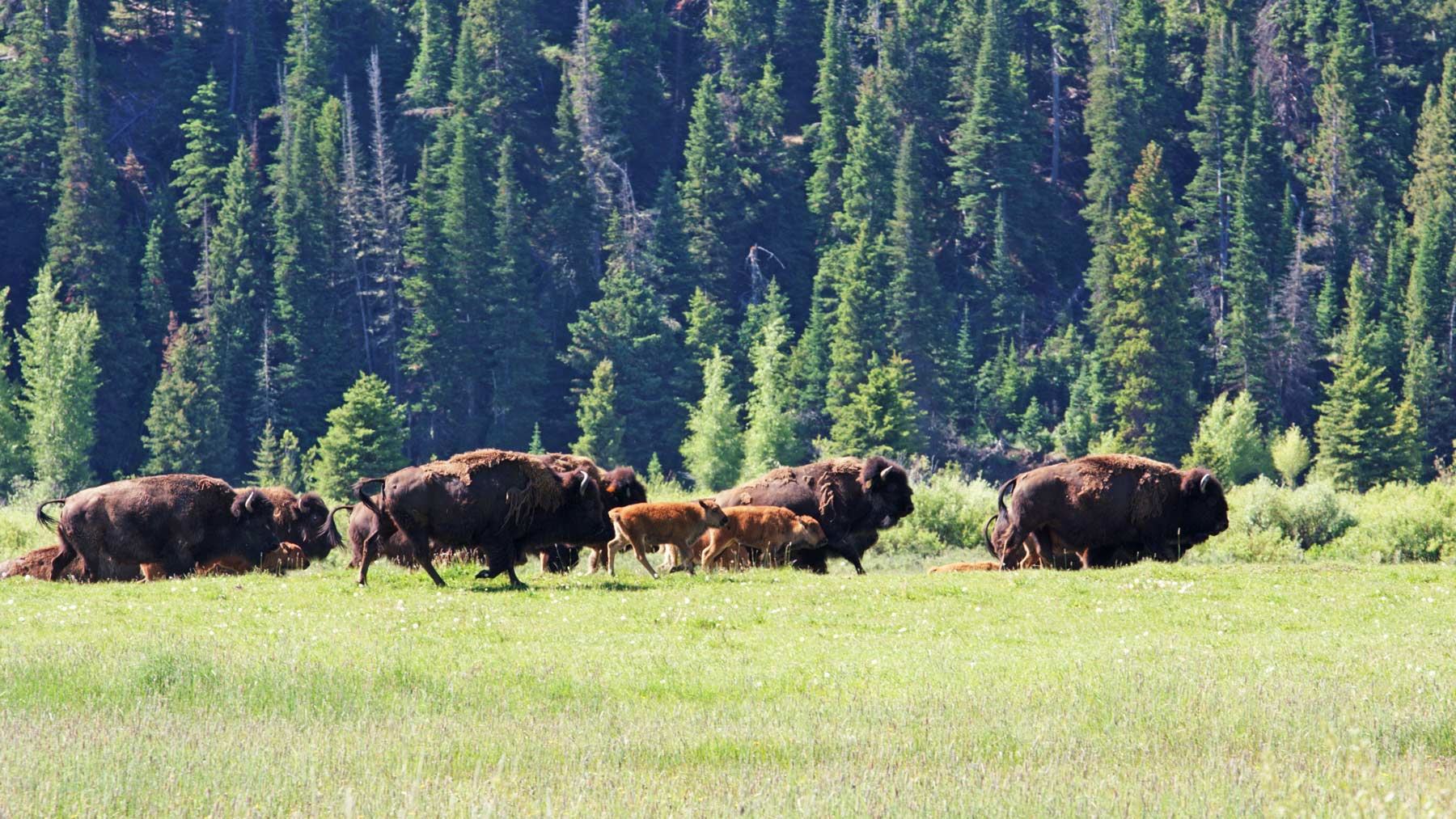
Another road we would recommend while in the park is Antelope Flats. Pocket gophers and voles frequently like to reside there. Of course, this means that predators, such as coyotes, foxes, hawks and wolves can be spotted too. If you check out Grand Teton 8K, we actually captured footage of a fox with a vole.
If you’re a bird watcher then you need to head over to Oxbow Bend. This is a great place to spot numerous species of birds such as bald eagles, osprey, pelicans and trumpeter swans. You can also see beavers, muskrats, and river otters swimming in the water. We recommend Oxbow Bend especially at sunset because, if you’re like us, it’s a great opportunity to take some incredible pictures that you’ll always cherish.
3. Lake Clark National Park
While Lake Clark National Park may not appear on most top ten lists, when it comes to wildlife, it definitely belongs. Thirty-seven species of terrestrial mammals are believed to be present in the Lake Clark region which include: black bears, brown bears, caribou, Dall’s sheep, moose and wolves.
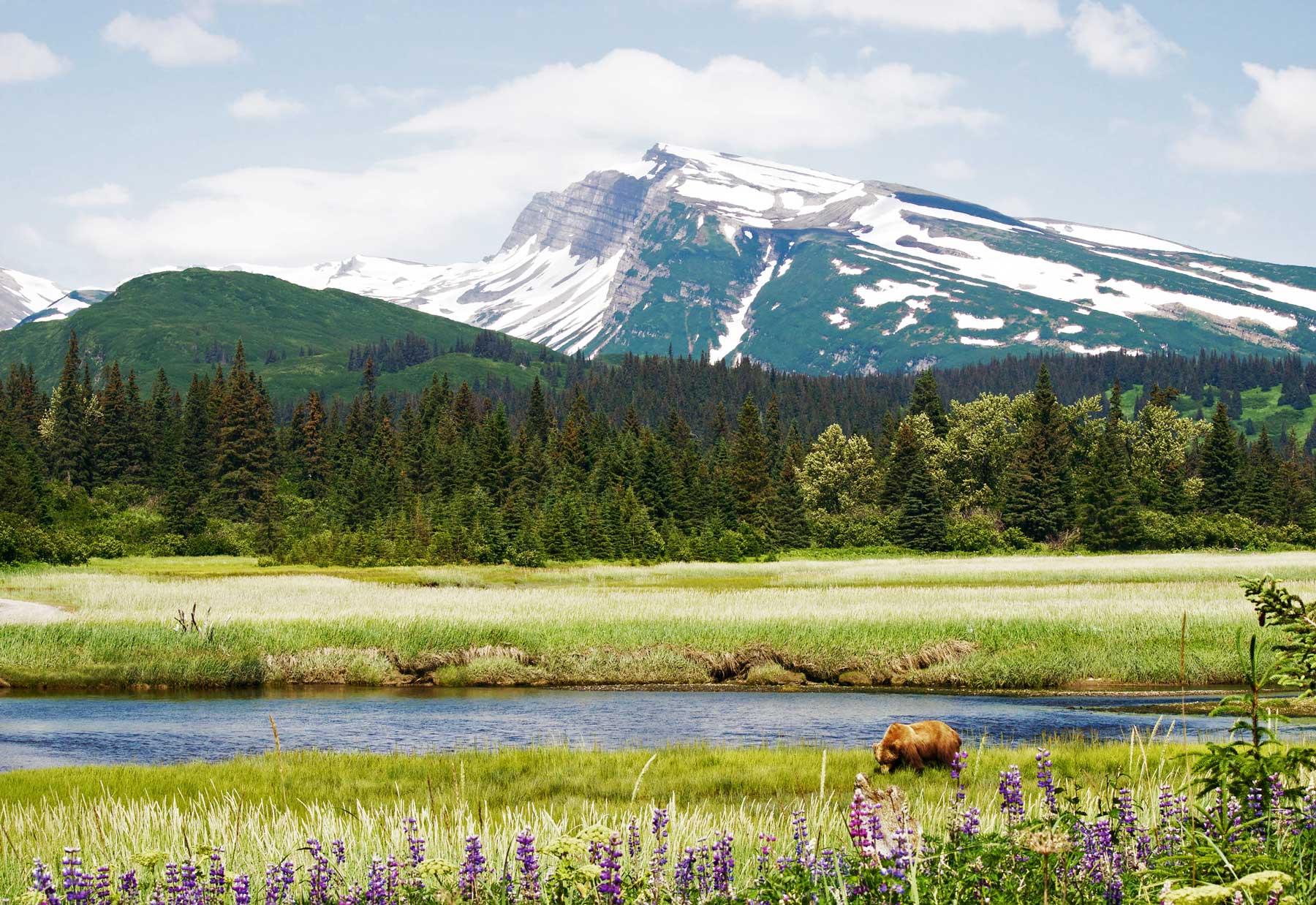
The National Park Service provides a particularly fitting description. “Lake Clark National Park and Preserve was created to protect scenic beauty (volcanoes, glaciers, wild rivers and waterfalls), populations of fish and wildlife, watersheds essential for red salmon, and the traditional lifestyle of local residents. Lake Clark’s spectacular scenery provides a true wilderness experience for those who visit.“
If you’re a bird watcher then it’s important to note that migratory birds from around the world come to Lake Clark in the winter. You can see migratory birds that arrive from wintering grounds around the world. There are various species of birds which have been observed in the park and preserve including two of our favorites: the boreal chickadee and gray jay. A great place to see these birds is the foothill/lakes region to the west of the Chigmit Range, and the Chulitna Flats adjacent to Lake Clark. These are their feeding and nesting grounds.
Lake Clark National Park and Preserve offers some incredible bear viewing opportunities. If you’re planning to watch these bears then we recommend: Chinitna Bay, Crescent Lake, Silver Salmon Creek, and Shelter Creek/Tuxednia Bay.
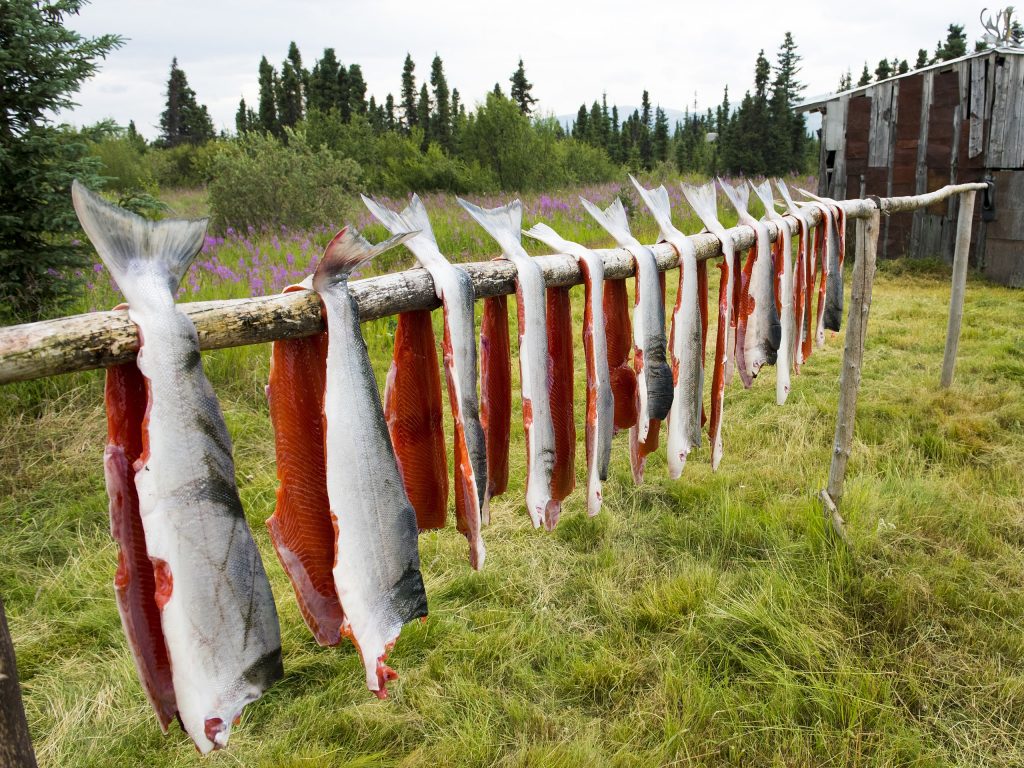
And, if you want to do more than just look at the fish, Lake Clark provides some excellent fishing opportunities. You will find pristine fishery habitats at this park. Two of our favorites are the artic grayling and rainbow trout. They are among the twenty five species of fish to be found here. Crescent Lake is the park’s most popular fishing destination.
4. Rocky Mountain National Park
At the turn of the last century, America’s national conservation and preservation movement, led by Theodore Roosevelt, John Muir and Gifford Pinchot, championed the preservation and protection of America’s most beautiful wilderness areas. On January 26, 1915, our national park system would add another jewel to its crown when President Woodrow Wilson signed the Rocky Mountain National Park Act.
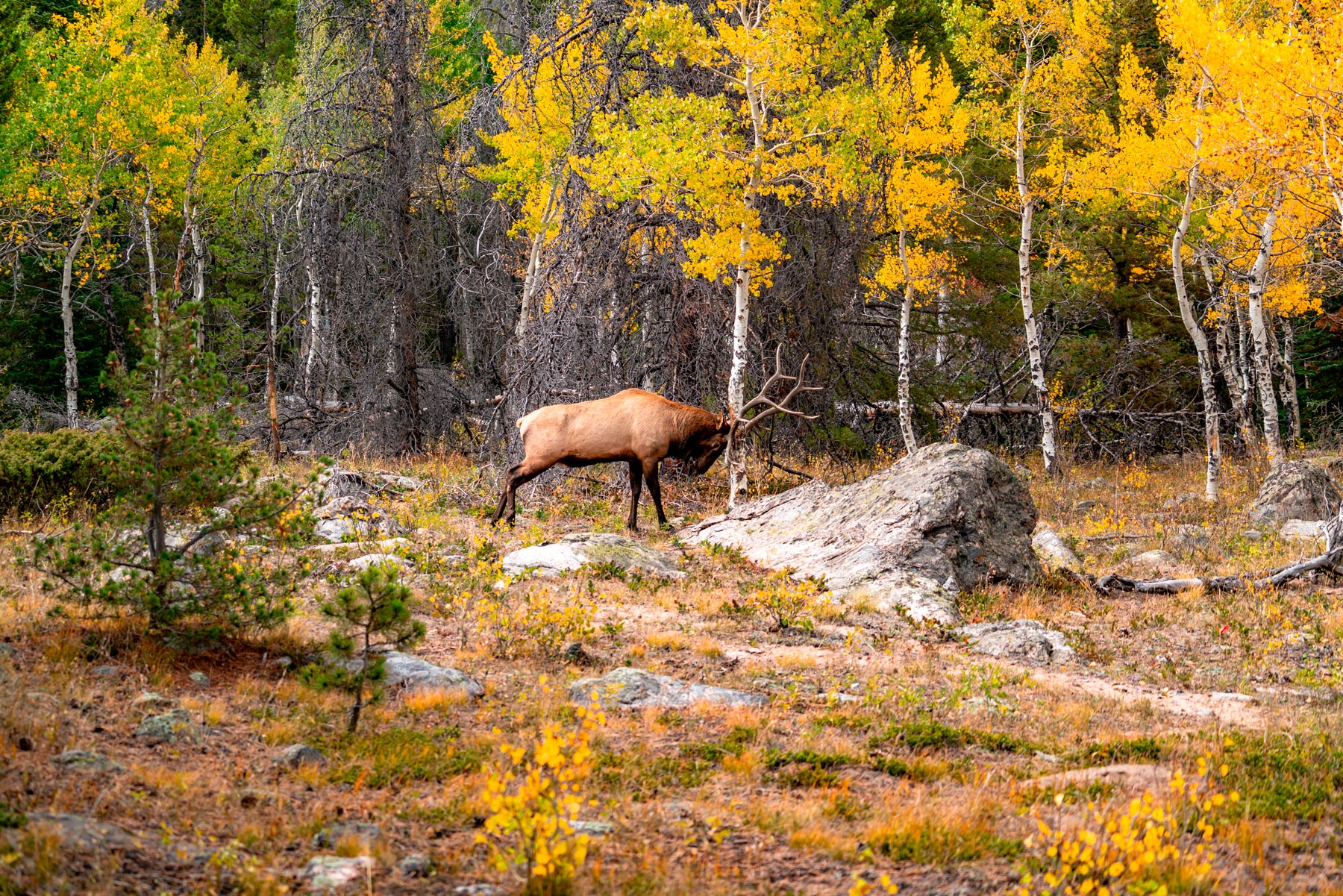
Rocky Mountain National Park caters to folks who come to see the wonderful wildlife. This includes an elk herd that can be quite large in winter as well as hundreds of bighorn sheep, numerous mule deer and a small population of moose. So, where does one go to get the best viewing? Well, it depends on what animal you want to see.
If you’re looking for Elk, they can be seen anytime You should look for them in the meadows. Elk spend much of their time at or above tree line during the summer, moving to lower elevations in the fall, winter and spring. Their favorite feeding times: dawn and dusk. As for the bighorn sheep, we would recommend Sheep Lakes.
If it’s moose that you’re looking for then you want to go down by the Colorado River in the Kawuneeche Valley on the park’s west side. If you prefer mule deer you’ll be pleased to know that they can be seen anywhere. It’s best to look for them at lower elevations in the open areas however.
Now, we haven’t mentioned marmots, which happen to be one of our favorite wildlife creatures to film. If you like them, too, they’re best seen on the alpine tundra along Trail Ridge and Old Fall River roads.
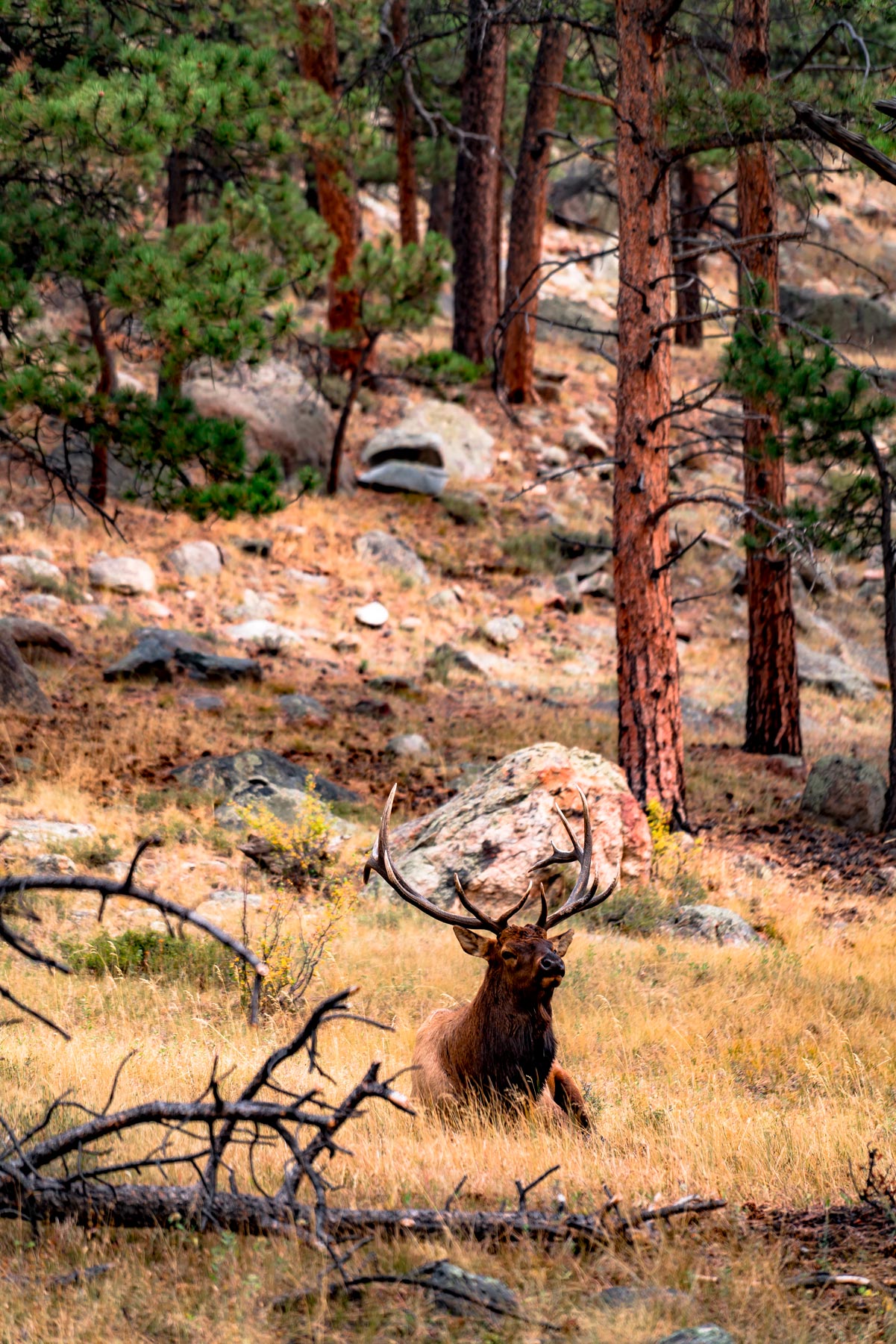
5. Great Smoky Mountains National Park
Great Smoky Mountains National Park is a jewel nestled between North Carolina and Tennessee. It’s world renowned for its animal life and is America’s most visited national park. An estimated 12.1 million visitors came in 2020 which is almost a staggering nine million more than the second most visited national park.
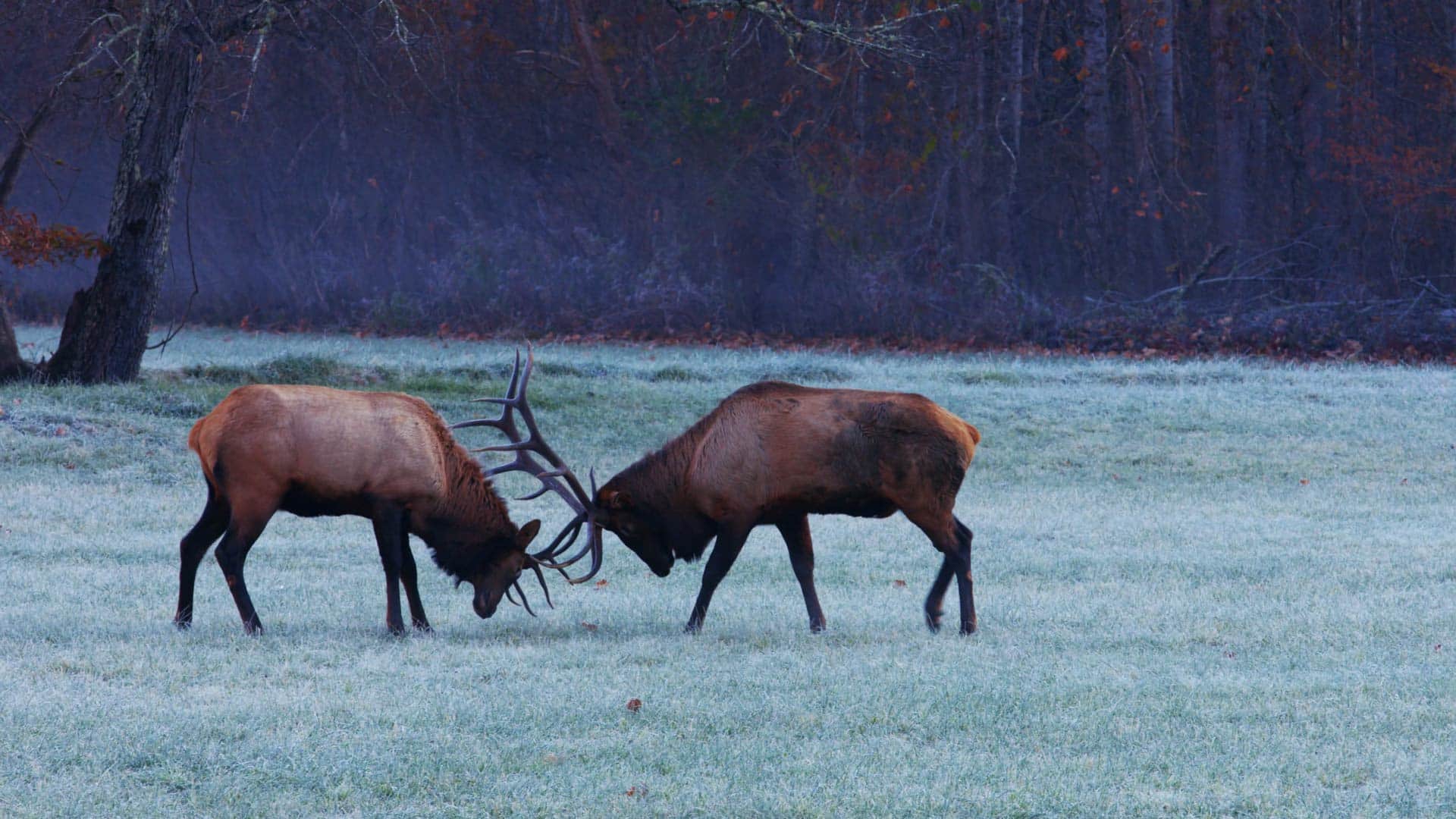
(Courtesy OF Wikimedia Creative Commons)
When it comes to wildlife, Great Smoky Mountain is best known for its resident black bears. The park is also one of the few refuges for elk and whitetail deer east of the Mississippi River.
If you’re looking for the bears, please note that they are most active during the early morning and late evening of the spring and summer. We would recommend that you go to the Cades Cove area. It’s accessible from the park’s eleven mile loop road.
As the National Park Service reports, “The park contains some of the largest tracts of wilderness in the East and is a critical sanctuary for a wide variety of animals. Protected in the park are some 65 species of mammals, over 200 varieties of birds, 67 native fish species, and more than 80 types of reptiles and amphibians.“
Something which you may not have known, Great Smoky Mountain is known as the “Salamander Capital” of the World. There are 30 salamander species grouped into five families which makes this park one of the most diverse areas on earth.
Top 10 Best National Parks for Wildlife
6. Denali National Park
Often referred to as one of the last great wildernesses of the world, Denali National Park is Alaska’s most popular park. This park is HUGE with approximately six million acres of sanctuary. At Denali, you can discover wildlife such as black bears, caribou, Dall’s sheep, grizzly bears, moose and wolves.
Also commonly seen are coyotes, lynx, marmots, porcupines, red foxes and wolverines. The best place to see this amazing wildlife is along the Denali Park Road. You will also find some excellent hiking trails along this road which offer additional viewing spots.
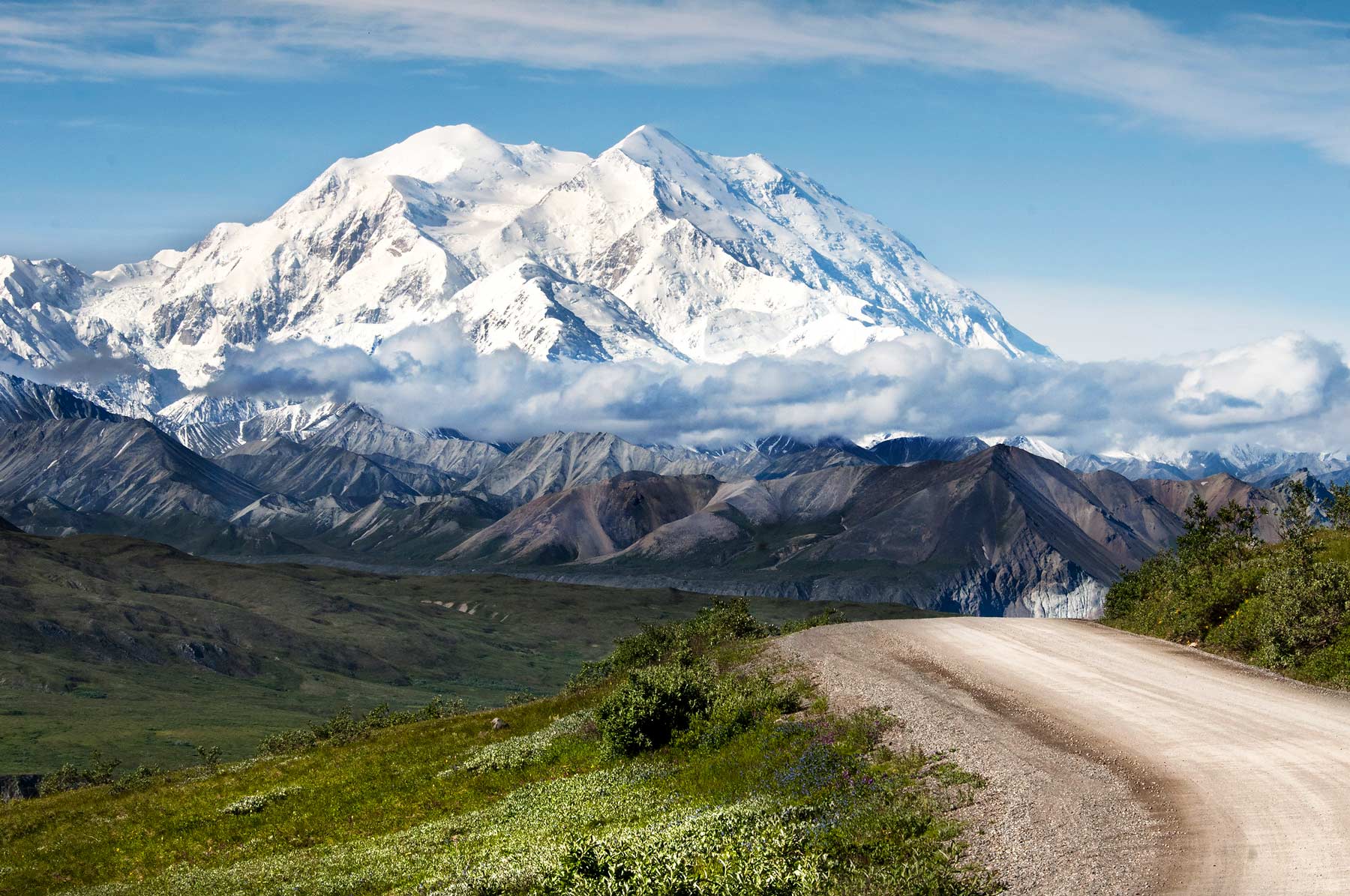
You will also find a wide range of migratory birds at Denali. These birds come from six different continents and they include: arctic warblers, bald eagles, golden eagles, hummingbirds, northern hawk owls, peregrine falcons and red-tailed hawks. Check out the park’s famous ninety-two mile road where you’re likely to get some incredible pictures.
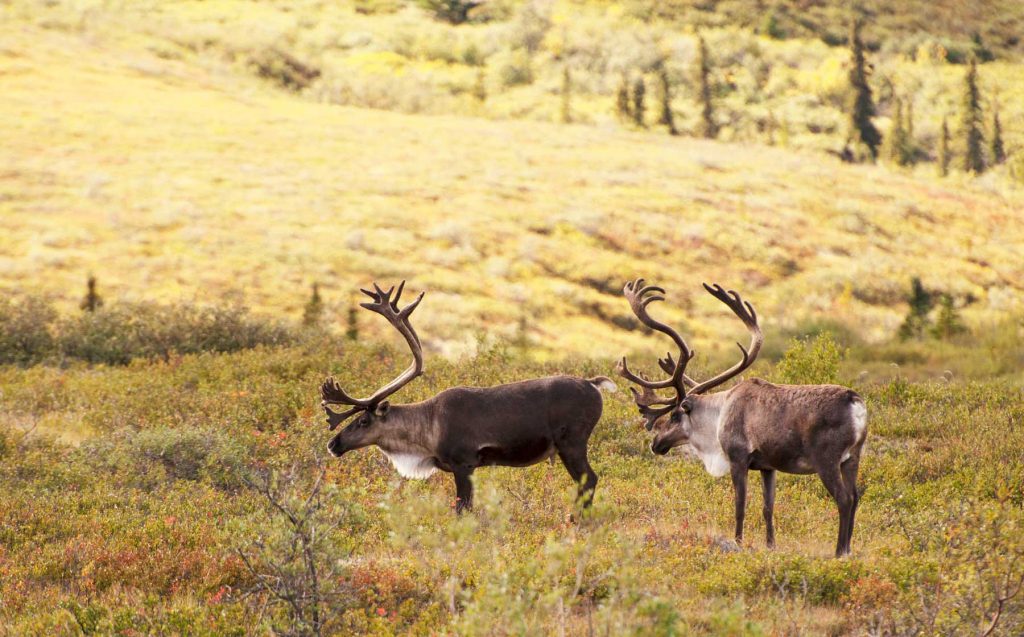
7. Glacier National Park
The man whom some would call America’s first environmental activist, George Bird Grinnell, would describe Glacier National Park as the “crown of the continent.” He first visited this magical place as a young man in 1885. As one of the first Americans to visit and record his impressions of Glacier, Grinnell would have the honor of having a glacier, a lake and a mountain named after him.
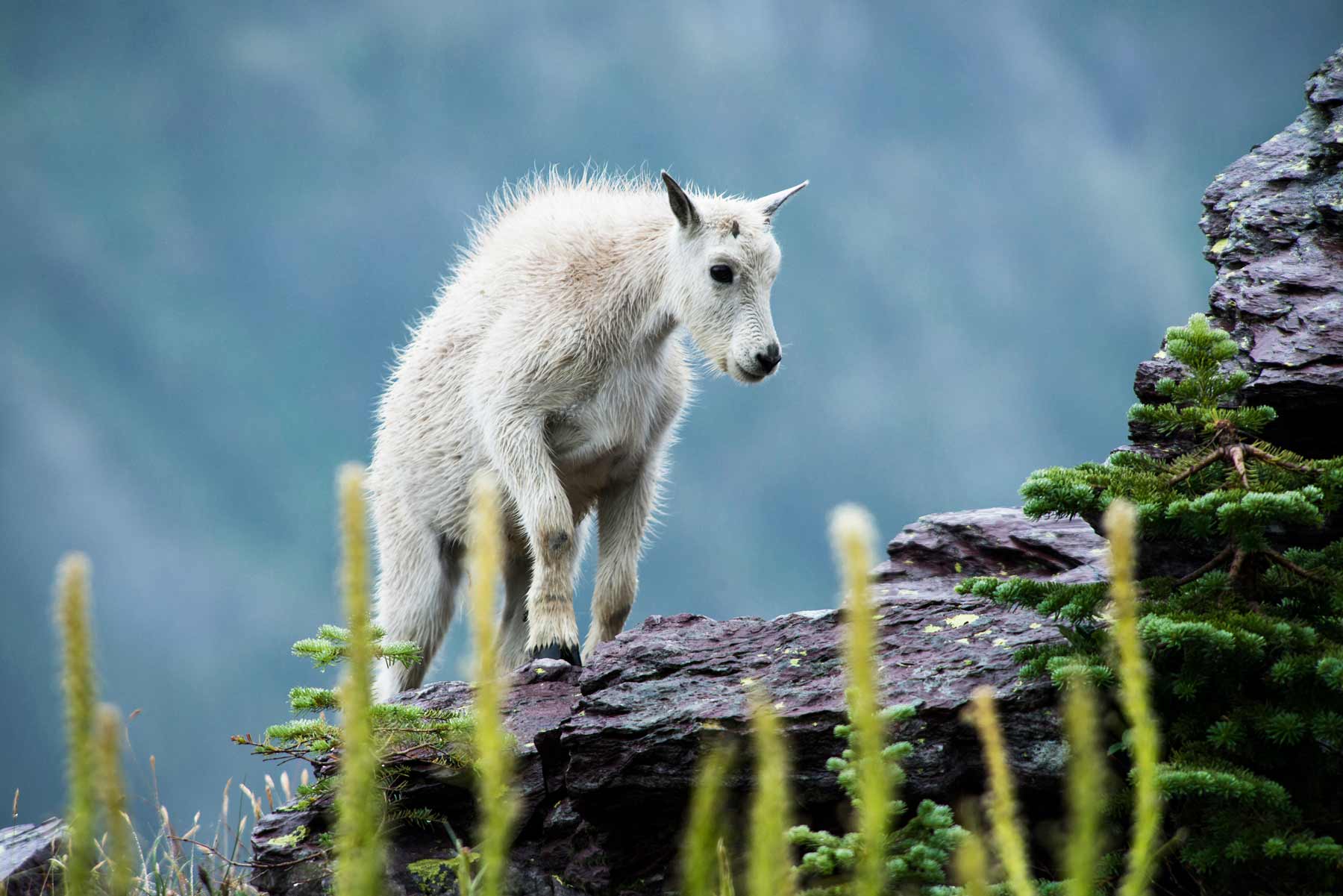
Located on Montana’s northern border, Glacier National Park features North America’s healthiest grizzly population. Welcome to Bear Country! In the spring and summer, grizzlies spend their time in the valleys, lowland meadows, and aspen groves. During the winter, they return to the high country to hibernate. Regarding the best place to look for them, we recommend the trail near the Garden Wall. Just be careful not to look too closely.
No words can describe the grandeur and majesty of these mountains, and even photographs seem hopelessly to dwarf and belittle the most impressive peaks. The fact that it is altogether unknown, the beauty of its scenery, and the opportunity it offers for mountain climbing, give the region a wonderful attraction for the lover of nature.
–George Bird Grinnell, “Crown of the Continent” in Century Magazine (1901)
Glacier is a huge park which also features bald and golden eagles, lynx, moose, mountain goats, mountain lions and white-tailed deer. The park is also home to badgers, bats, beavers, mink, otters, and porcupines. We recommend a visit to the Bison Range. And, while you’re there, you might also see the antelope, bighorn sheep and deer.
Western Montana is home to at least 19 large mammals and almost 100 small ones. You’ll keep busy looking for them, but you’ll never find them all.
8. Katmai National Park
For Alaska to have two parks in our top ten list of “wildlife wonders,” it’s got to offer some of the most impressive wildlife imaginable. And, it does! The Alaskan wilderness takes center stage at Katmai National Park. It’s one of nature’s most spectacular places.
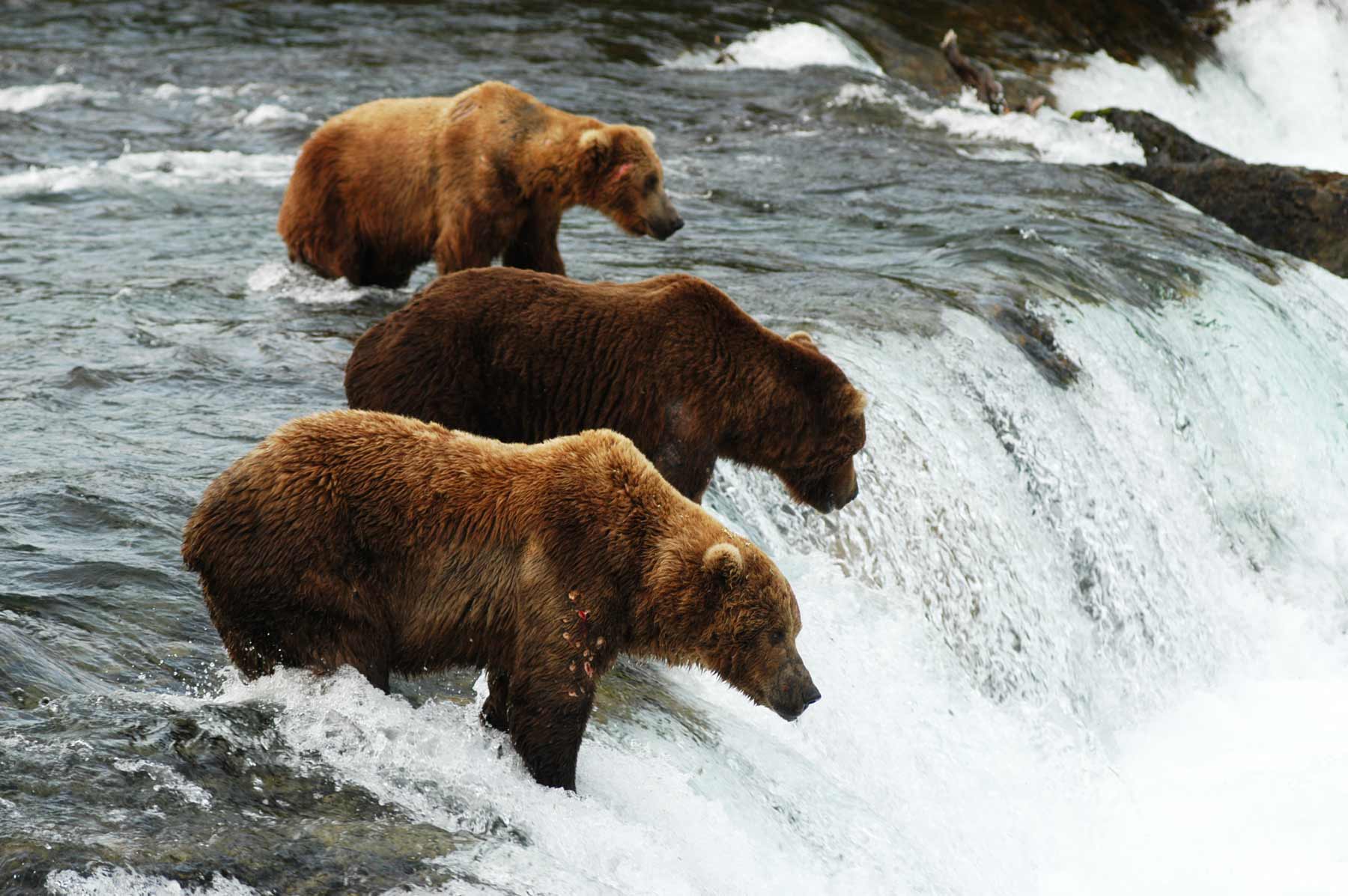
When it comes to watching the incredible wildlife at Katmai, where do we begin?You have brown bears catching flying salmon from streams. The bears outnumber the people at this park so beware. Katmai is one of the best places to see the animals in their natural habitat. There are viewing platforms which allow visitors to safely watch the bears. Katmai is also one of the best bird-watching spots in North America.
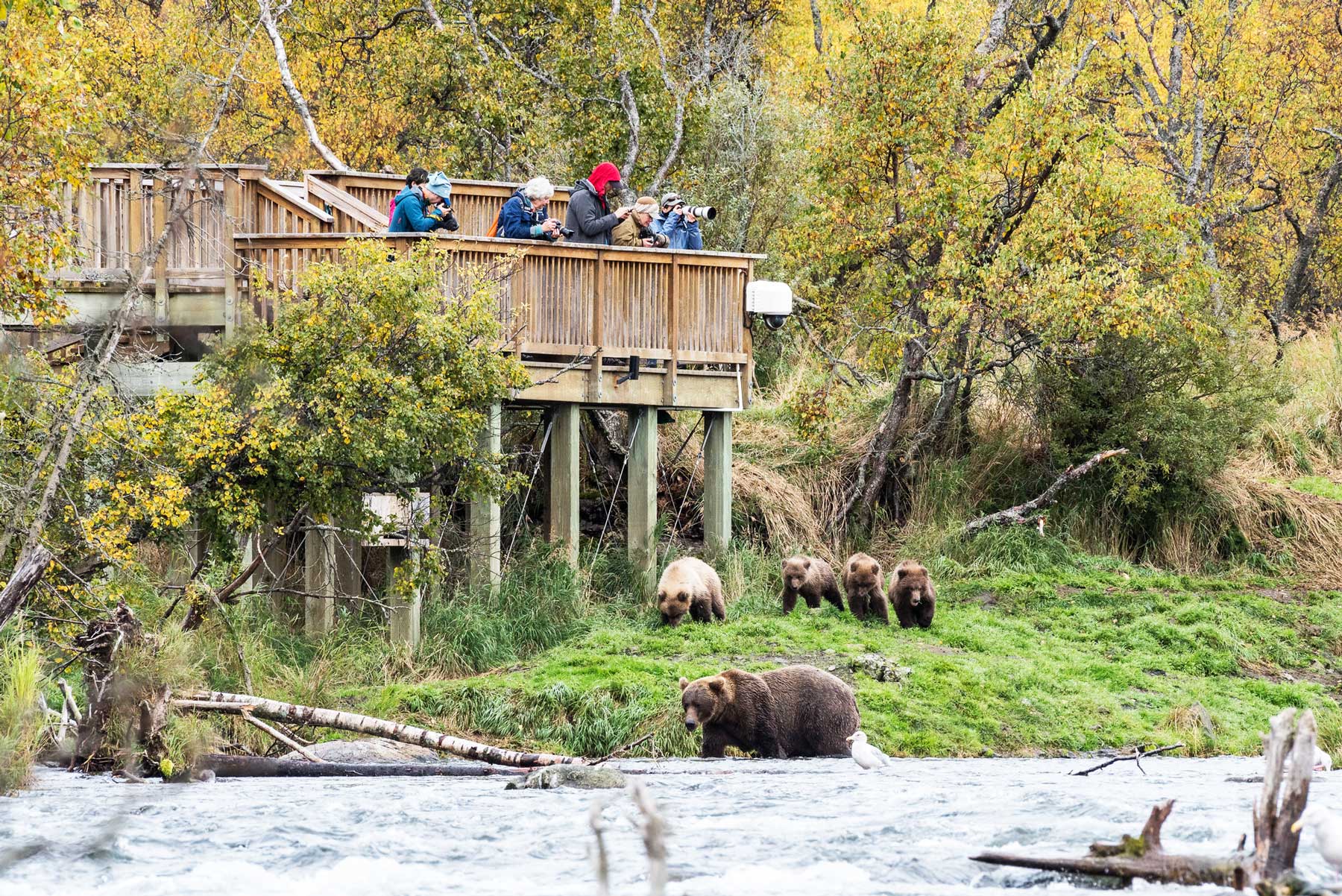
9. Badlands National Park
Today, the Badlands protects an expanse of mixed-grass prairie where bison, bighorn sheep, black-footed ferrets and prairie dogs roam. Birds of prey such as the Golden Eagles, Northern Harriers, and Short-Eared Owls also can be seen in the skies above.
If you’re looking for the big bison, an excellent place to find them is Sage Creek Road. Head over to the Pinnacles Overlook and you’ll be treated to the bighorn sheep who skillfully navigate those rocky precipices. We don’t advise you to try it however.
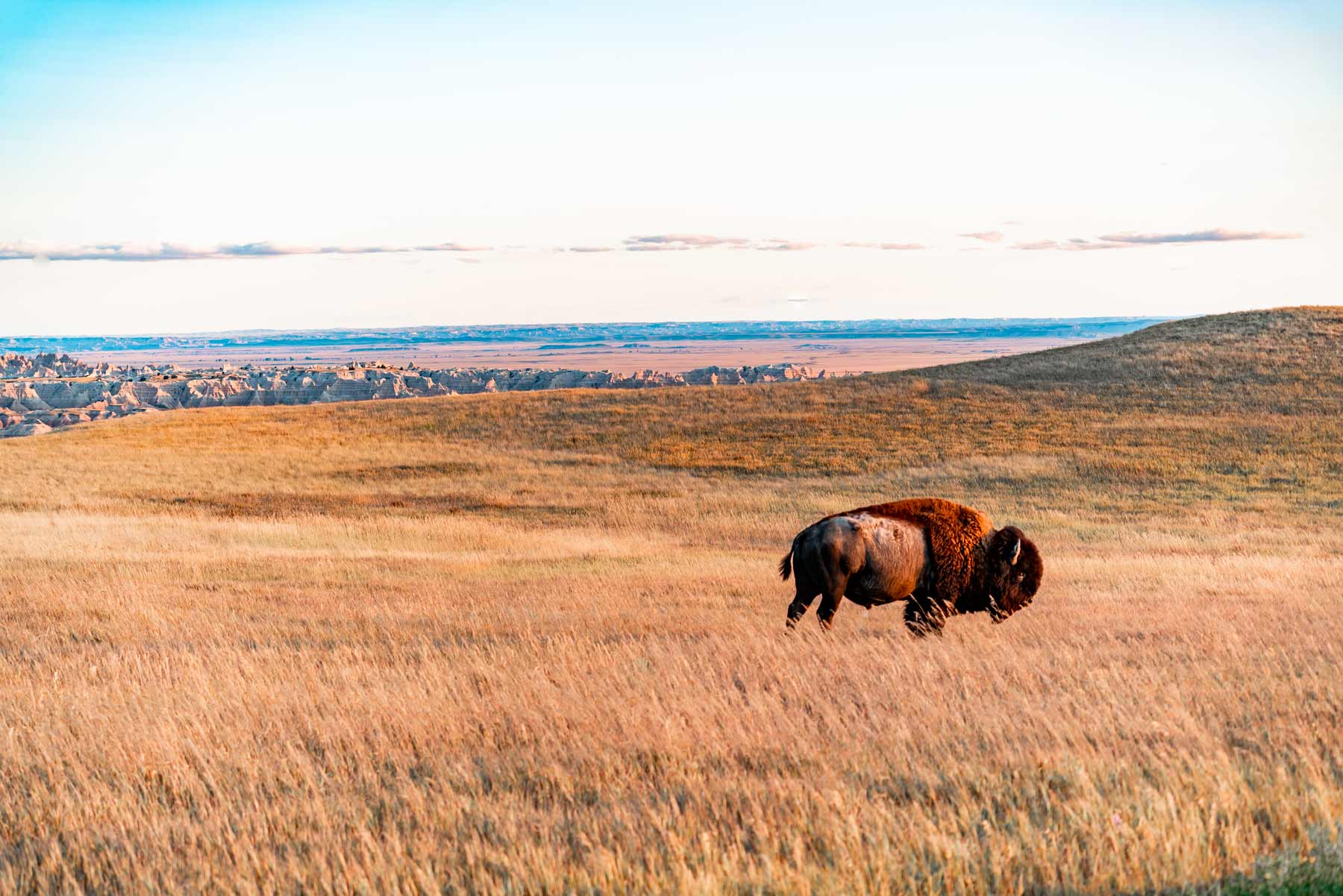
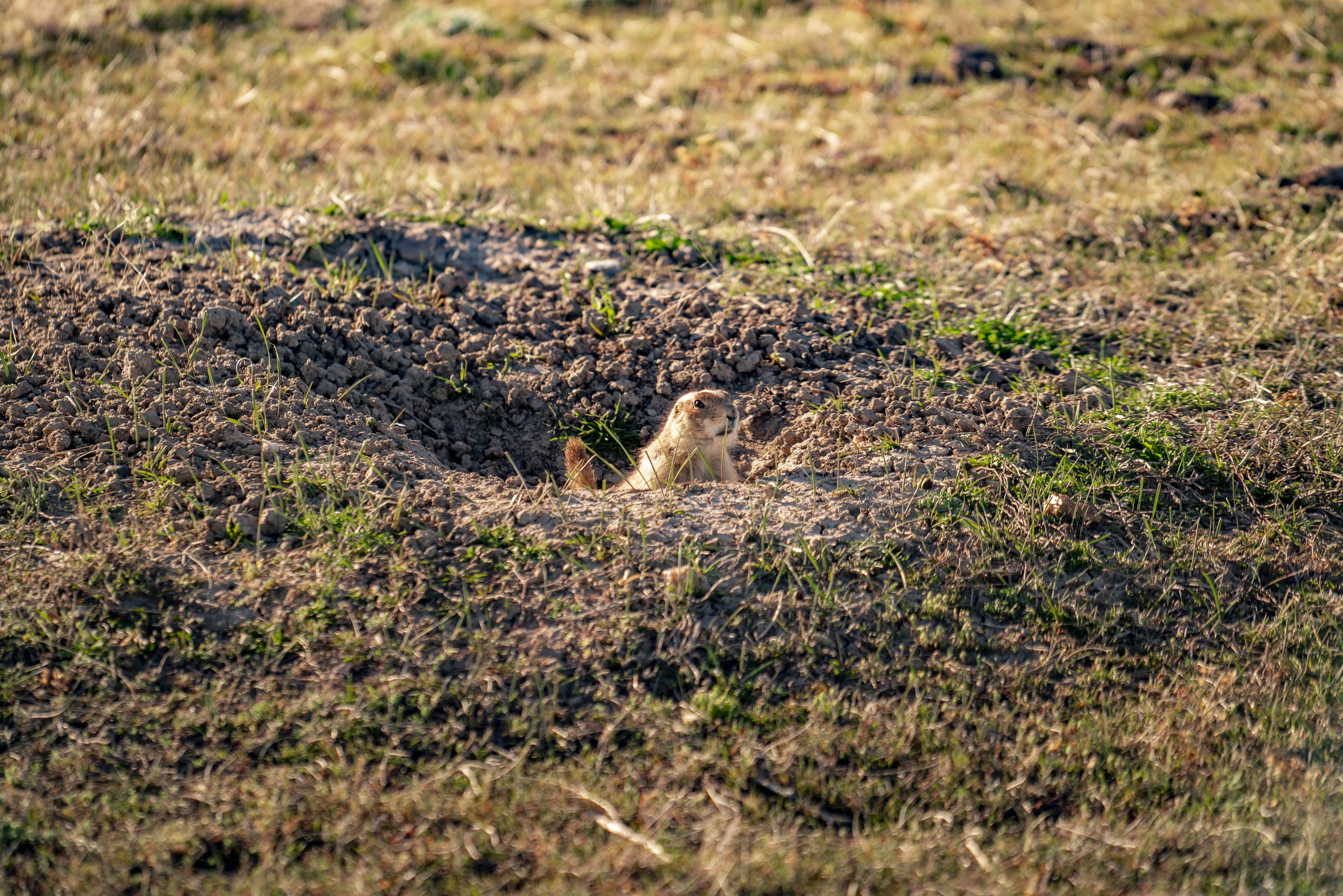
One of our favorites to watch are the prairie dogs. They can be viewed from the road at Burns Basin Overlook, Roberts Prairie Dog Town and the Sage Creek Campground. While there, you may also see coyotes, deer and snakes. Be vigilant.
10. Olympic National Park
President Theodore Roosevelt originally designated it as Olympus National Monument on March 2, 1909. It would be left to his fifth cousin, Franklin Delano Roosevelt, to change that designation to a national park on June 29, 1938.
In recognizing this incredible place, the Roosevelts would team up to make America a wonderful gift.
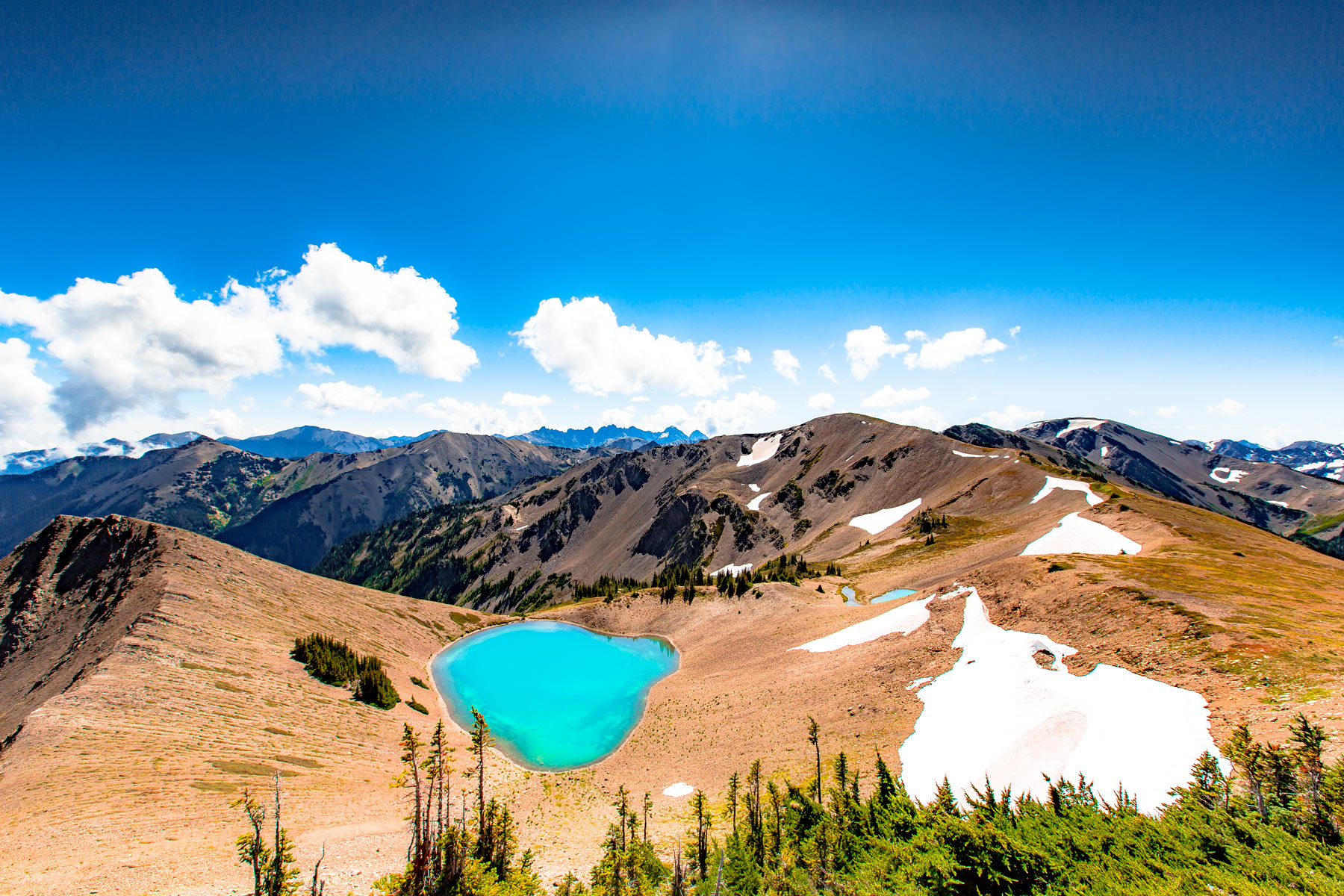
Situated in the northwest corner of Washington, Olympic National Park is the most diverse national park in America.
This park has everything from lowland forests, striking mountain ranges, pristine alpine lakes, sparkling rivers, temperate rain forests (the largest in North America), iconic wildlife, and over fifty miles of wild coastline. And, it’s oh-so-close to Seattle. Olympic National Park has it all especially if you’re looking to beat the crowds.
Olympic National Park is internationally recognized as a Biosphere Reserve and World Heritage Site. The old growth forests of Sitka spruce, western red cedar and hemlock are great places to explore.
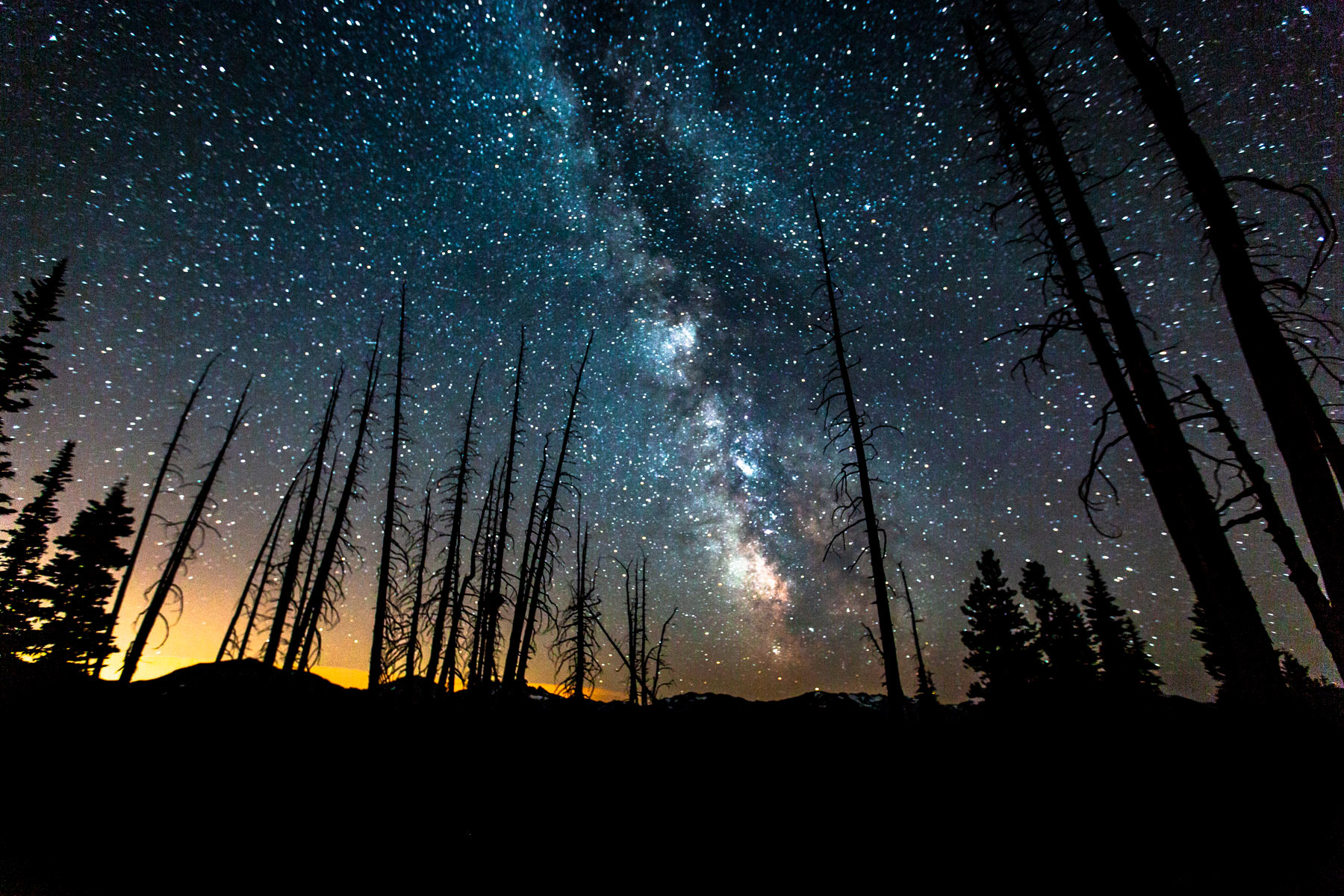
Olympic protects the largest population of Roosevelt elk in the Pacific Northwest. Most elk sighting occur in the park’s lower valleys and rain forests. Elk encounters occur throughout the day, but are most common during dusk or dawn.
If you’re looking for those wonderful marmots, you will typically spot them at the park’s higher elevations. Trails near Hurricane Ridge and alpine trails make excellent spots for marmot sightings during the summer.
If you prefer aquatic species then we recommend the Pacific salmon. There are salmon migrations throughout the year. We recommend the Salmon Cascades Overlook in the Sol Duc Valley which provides one of the best views.
Near its shores, you can also spot migrating gray whales, seals, sea lions, and sea otters. If you’re willing to brave the colder temperatures in the fall and winter, you’ll feel like you have the place to yourself.
National Parks Wildlife Summary
We hope that you’ve found our top ten list of national parks to see the most amazing wildlife helpful as you plan your next getaway. If you decide you would rather experience the excitement of the great outdoors than sit at home then we hope you’ll consider traveling to one of these amazing places. Of course, it you’d rather stay home then we hope you’ll check out our amazing films so you can savor the experience from the comfort of your own home.
We welcome your feedback. If you would like to comment on our list or share other parks you believe are equally deserving then please do so. It brings us great joy to bring these wonderful places to life for everyone. So, happy traveling. We hope to see you at one of America’s national parks.
Map of Best National Parks for Wildlife
List of Top 10 Best National Parks for Wildlife
- Grand Teton National Park
- Yellowstone National Park
- Lake Clark National Park
- Rocky Mountain National Park
- Great Smoky Mountains National Park
- Denali National Park
- Glacier National Park
- Katmai National Park
- Badlands National Park
- Olympic National Park
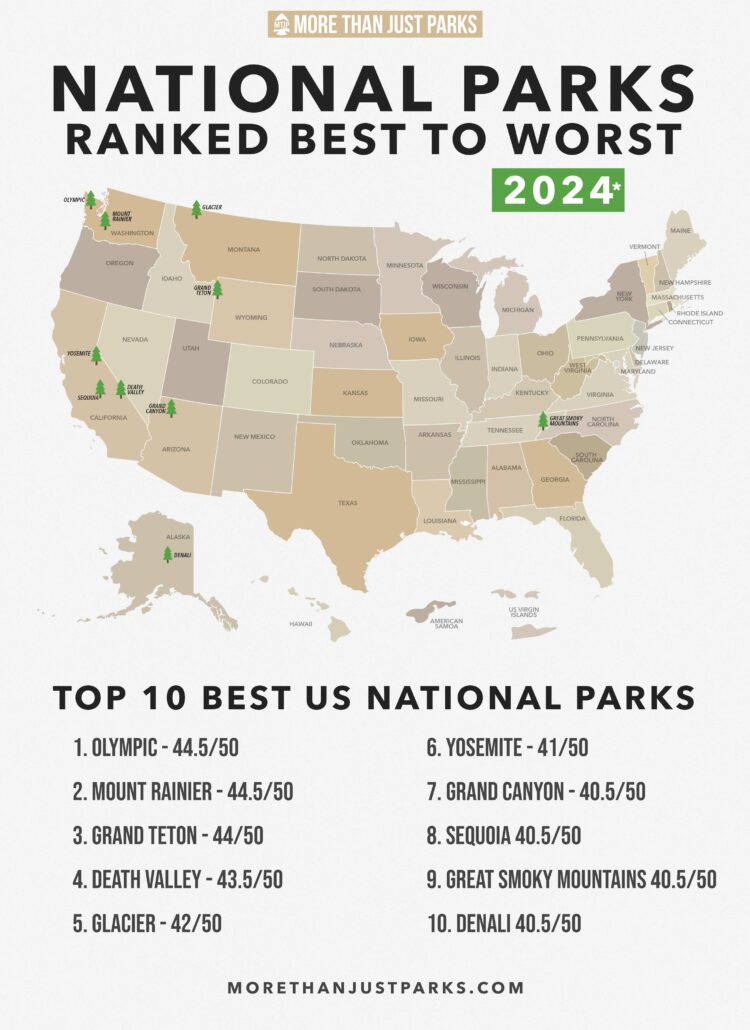
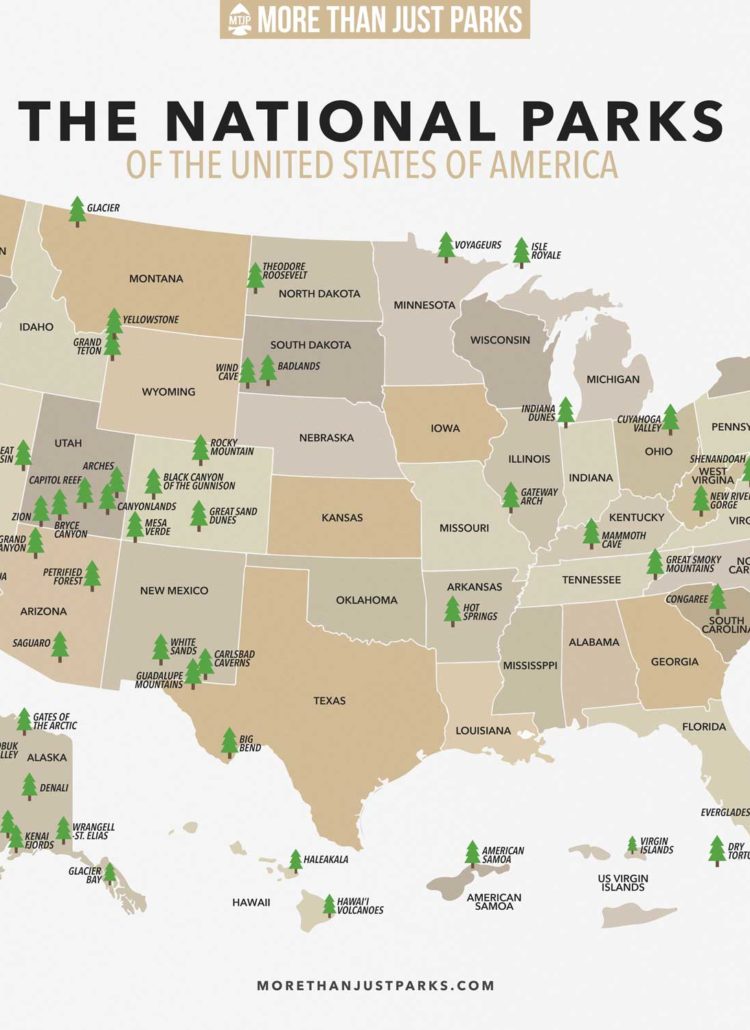
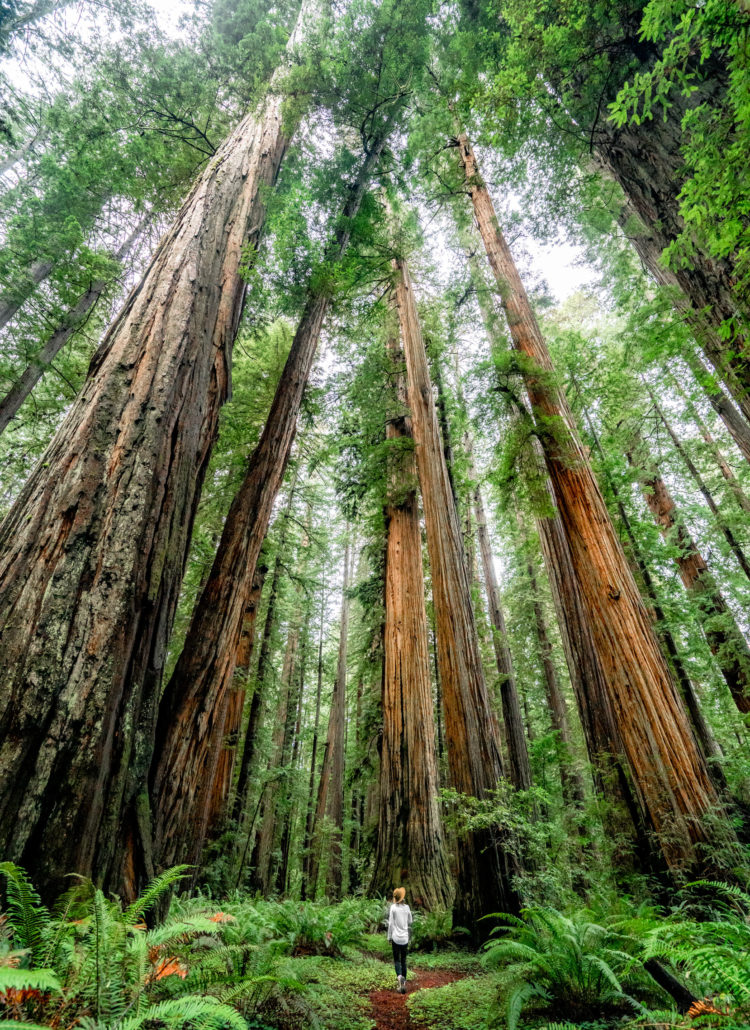
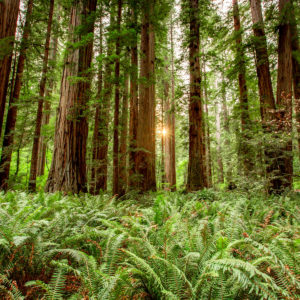
Leave a Reply